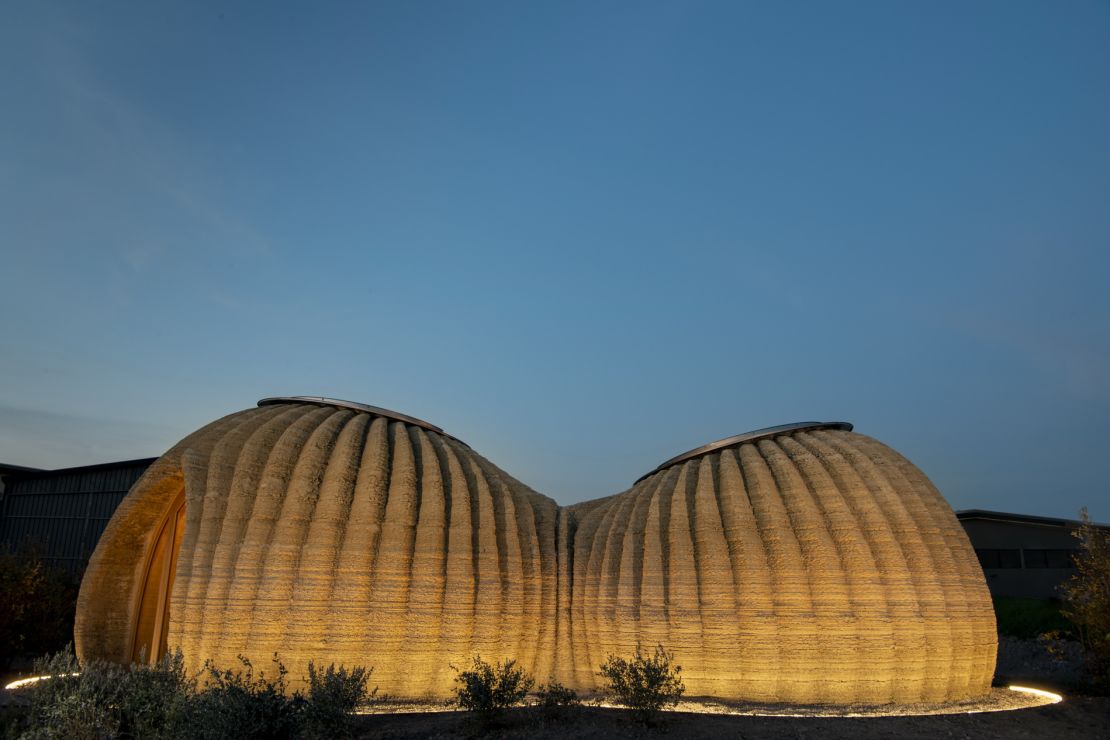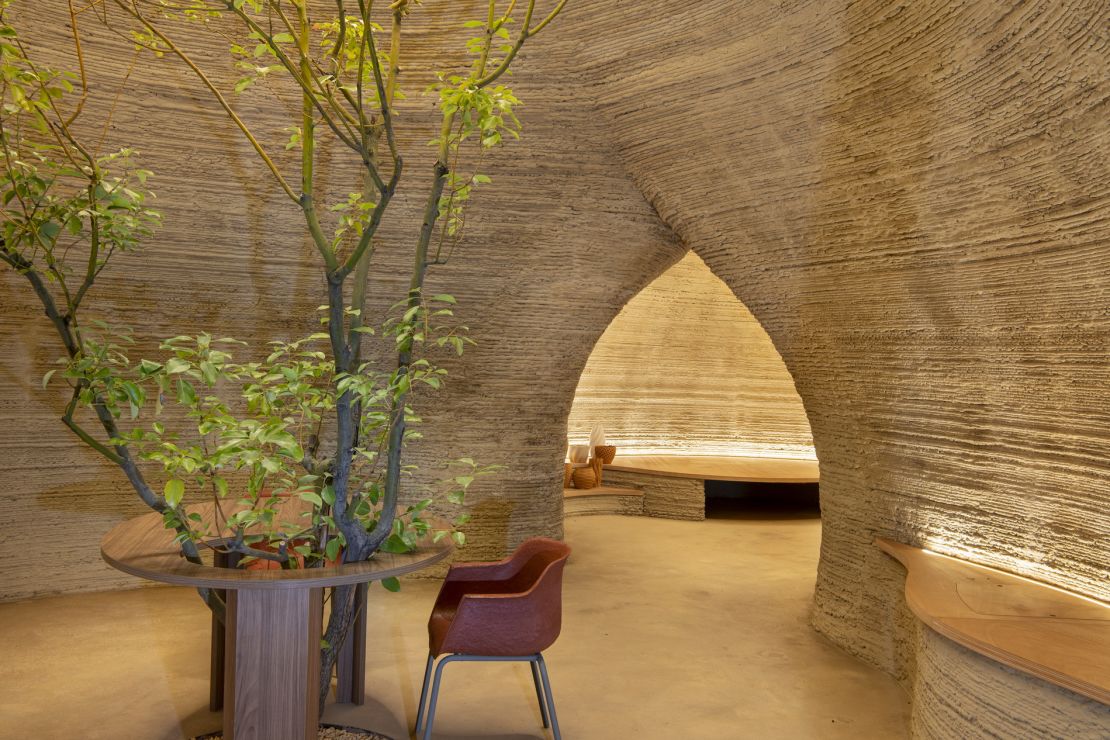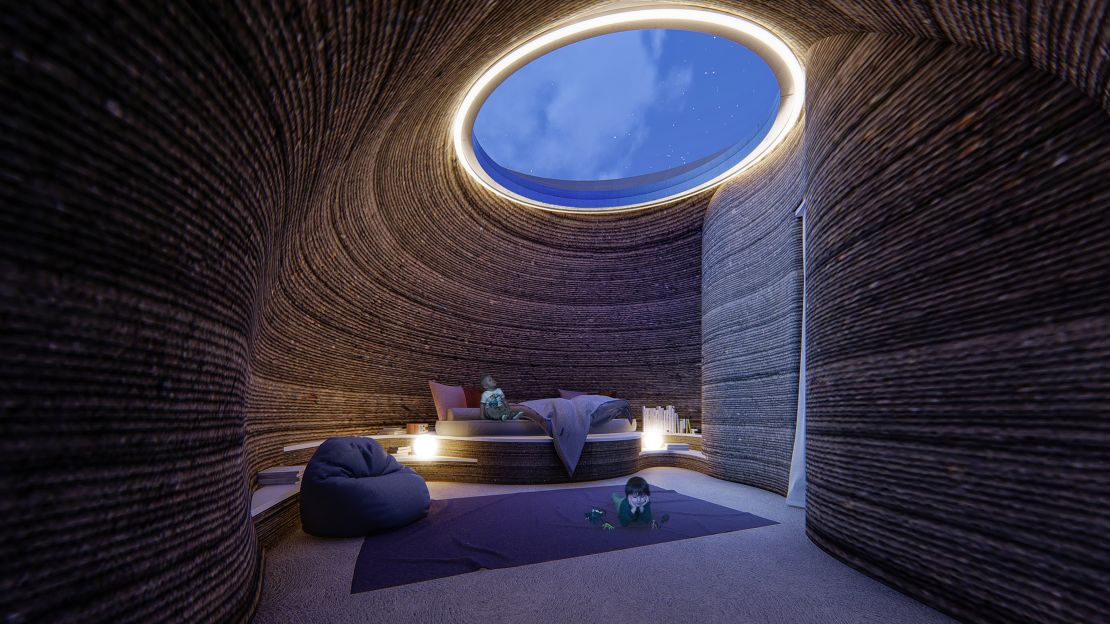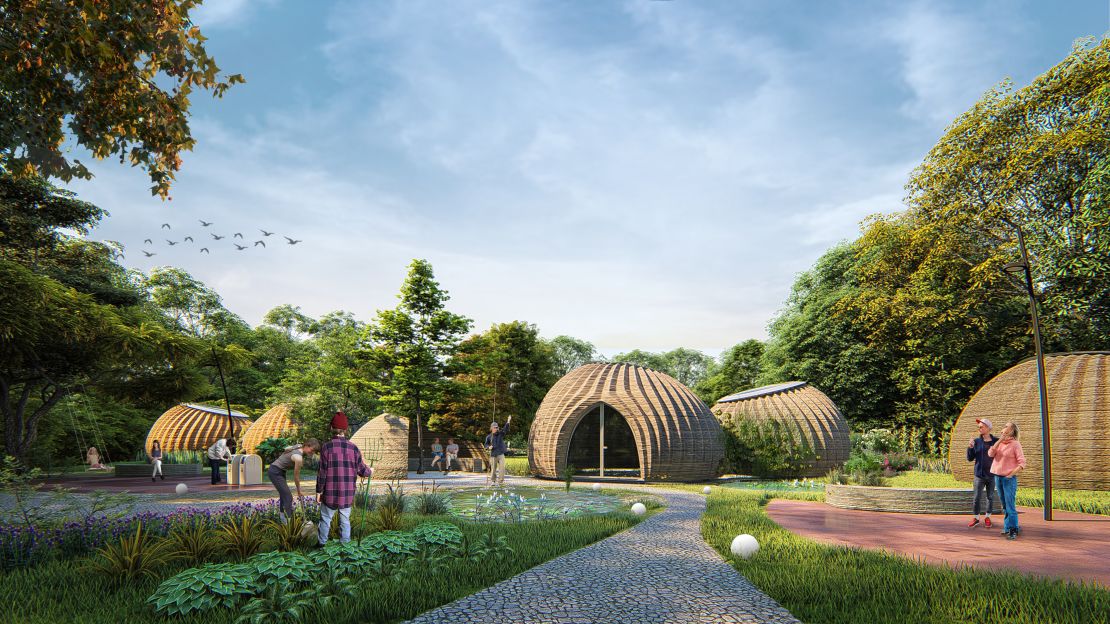How might architecture aid in solving the housing crisis and help build a more sustainable future? West of Ravenna, Italy, in the small town of Massa Lombarda, Mario Cucinella Architects has completed a prototype for a home that aims to do both, by combining some of the newest technology with the oldest housing materials. The dwelling, called TECLA, is the first 3D-printed home made from clay, and its founder, Mario Cucinella, hopes that its program design can become a viable option to house people who lack adequate housing due to financial issues or displacement.
Over the past few years, a number of 3D-printed homes and communities have been conceptualized, promising quick build times and low construction costs, from a 400-square-foot home printed in 24 hours in Russia, in 2017, to an entire neighborhood printed in Mexico two years later. In the US the first printed home to hit the market – a one-story,1,400-square-foot space in Riverhead, New York – was listed for $299,000 in February, Meanwhile, in Austin, Texas, a series of two- to four-bedroom residences will be ready for move-in later this year.

But while previous structures have been built using concrete or synthetic materials like plastic, TECLA – whose named is both derived from writer Italo Calvino’s fictional city of Thekla, and an amalgamation of “technology” and “clay” – was built from soil found at the site mixed with water, fibers from rice husks and a binder, the last of which Cucinella notes is less than 5% of the total volume. Cucinella believes this approach can be replicated in different parts of the world, using whatever local materials are available, and could be particularly helpful in underserved rural areas, where industrial construction materials may be harder to come by.
Printing with clay does have its drawbacks. It’s a much slower process than quick-drying concrete – the design can be printed in 200 hours but the clay mixture can take weeks to dry, depending on climate, according to Cucinella – and it also has height limitations (all-clay skyscrapers are not in the future).

However, the program’s flexibility of using available soil and its ease of construction means that TECLA could be well-suited to provide housing in many different countries. In 2015, Habitat for Humanity estimated that a staggering 1.6 billion people lack adequate housing, and UN-Habitat – the United Nations program for human settlements and sustainable urban development – estimates that by 2030, 3 billion people, or 40% of the world’s population, will require access to accessible and affordable residences.
“You can build this kind of house in many more places when you are not dependent on some specific product,” Cucinella explained in a video interview.
Tradition meets new technology
Building homes from earth, Cucinella pointed out, is not new. Adobe – made from a mix of earth, water and organic material – is one of the world’s earliest construction materials, known for its durability, biodegradability and natural insulation.
“The challenge was really using an old material in the history of architecture with new technology to find a new shape of house,” Cucinella said.

To that end, the Crane WASP printers mixed water with the local earth, and then printed the 60-square-meter (645-square-foot) TECLA prototype layer by layer, using an intricate lattice work pattern. The design features two circular spaces joined together, with skylights in each filtering light onto its textured walls. The residence includes a living area, a bedroom and bathroom. Its furnishings, including tables and chairs, can also be printed using WASP’s machinery, while components like doors and windows were installed post-printing.
But the idea behind TECLA isn’t necessarily to replicate the same home for any environment, but to adjust the design based on the location. “We are not producing one type of house that you can print and do it everywhere… Because, of course, it’s different if you design a house in the north of Italy, or… in the middle of Africa, or in South America,” Cucinella explained. “We adapt the house to different climates.”

Additionally, he said, the building process, using WASP 3D-printed machinery, can be easily taught and widely used. WASP’s “Maker Economy Starter Kit,” can be shipped in a single container, with all the tools included for making houses, from the machinery that prints the overall structure down to the furnishings, as well as a recycling system and energy generator.
“I don’t think we are in the position to say this will be the future of all houses on the planet,” Cucinella said, pointing to countries like China, whose major metropolitan areas are dealing with an overpopulation crisis that would not be solved by small clay buildings. However, he added, “I think the revolution of 3D printing is to give people a degree of freedom in how to do things, without being connected to a big, professional industry.”
Carbon-neutral goals
Cucinella believes that 3D-printing with natural materials could be an important technological tool as Europe works toward its goal of climate-neutrality by 2050. According to a 2020 report by the UN Environment and the International Energy Agency, building and construction are responsible for 38% of all carbon emissions in the world.

Cucinella claims that TECLA is low-waste since its shell is biodegradable (extra fittings like doors and windows are not) and the construction process uses far less energy than building a standard home.
“When we talk about sustainability, I think we need to also think about the process of construction, because construction processes are very high-consuming and (make) high emissions of CO2 (carbon dioxide),” Cucinella said.
He believes we can learn from pre-industrial architectural design to make buildings that won’t harm the planet. “If we look to the past, we can tap into the knowledge of how architects were able to design buildings with no energy for many, many centuries,” he said.
The TECLA prototype is currently undergoing structural and thermal performance testing – an essential step before the project can be scaled. If it goes into production, Cucinella said he would happily live there, saying the materials evoke a sense of home and history.
“You get the feeling of something long ago from your memory,” he said.
Top caption: A photograph of TECLA at night.
